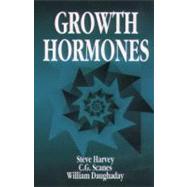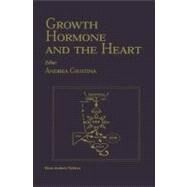


Can Human Growth Hormone (HGH) Reverse The Aging Process?In 1990, a clinical study was published in the New England Journal of Medicine by doctors and researchers at the Wisconsin Medical College suggesting a correlation between aging and human growth hormone deficiency. The study concluded that reduced production of the human growth hormone (HGH) in the body may be a contributing factor in the acceleration of the aging process. The study was performed on 21 healthy elderly men who exhibited lower than average amounts of insulin-like growth factor 1 (IGF-1). As part of the research, twelve of the 21 men were injected with a synthetic form of the human growth hormone (HGH) while the remaining 9 men were not treated with HGH. Measured data on skin thickness, muscle mass, body fat, and bone density were collected and analyzed for a period of 6 months. The results of the research showed that the 12 men treated with HGH had significant improvement in body composition with respect to increased bone density, increased skin tone, increased lean muscle mass and decreased body fat. At the same time, no measurable changes to body composition were observed from the 9 men who were not treated with HGH. Synthetic Growth HormoneSince the publication of the research, growth hormone has been thrown into the spotlight and promoted as the untapped source for the fountain-of-youth. Consequently, prominent individuals including athletes and celebrities have touted the use of growth hormone augmentation as means in achieving greater physical performance, more pronounced muscle boosting capacity, improved physique and in slowing-down (and even reversing) the aging process. While growth hormone injection and supplementation have been banned in most professional sports, HGH is still widely used in celebrity circles as an anti-aging agent. Follow-on clinical studies have been performed on men and women of various age groups to analyze the effects of the human growth hormone. It is interesting to note that subsequent medical studies confirmed the initial findings that growth hormone has positive impact on body composition in terms of increased muscle mass and decreased body fat. However, these studies also point out that no evidence of increased muscle strength nor increased exercise endurance were detected despite the increase in muscle composition (reference articles by the American College of Physicians and Brown University School of Medicine). Early HGH treatments involved the use of human growth hormones that were extracted from the pituitary glands of cadavers. However, this collection method was discontinued in the 1980's after mad cow disease was observed in receiving patients, despite cautionary measures with pasteurization. Currently, synthetic growth hormone that mimic the natural 191-amino acid growth hormone is produced by pharmaceutical companies. Both the human-source HGH and the synthetic HGH are administered subcutaneously. It has been found that injection still remains the most effective way to deliver growth hormone to the body. On the other hand, methods of treatment involving use of synthetic growth hormone tablets or sprays have been found to be ineffective in delivering any significant amount of desired dosage to the body. Synthetic hormone injection therapies are expensive and must be prescribed by a physician. It may cost as much as $10,000 or more per year and thus, can be cost prohibitive for the general population. Also, unless there is a justifiable medical need, it would be difficult for Joe Public to obtain access to it. Thus, access to hormone therapies remain confined to a very small population: those with a prescribed medical need and those who can buy their way into a prescribed treatment. Treatments involving synthetic hormone injection are classified as a form of hormone replacement therapy (HRT) since the source of the hormone does not originate from the patient's own body. Growth Hormone ReleasersAn alternative to HRT involves the use of growth hormone releasers which stimulate the body's own pituitary gland to manufacture more growth hormone. The Growth Hormone Releaser has shown to be a viable solution in helping the body to naturally increase its own growth hormone concentration. These formulations can be obtained without a prescription and are offered under brand names like as GENFX, GENF20PLUS, and Magna-RX HGH+. Hormone releasers are more appealing to the general public because of their effectiveness in naturally increasing the body's own growth hormone levels as well as their relatively low cost (see genf20plus review). There is a major difference between growth hormone releasers and human growth hormone. In the simplest explanation, growth hormone releasers are a type of dietary supplement and not growth hormones at all. Although the supplement contains natural ingredients, its composition is different from the peptide chain of amino acids that make up the human growth hormone. Growth hormone releasers, according to their manufacturers, are not intended to perform hormone replacement nor to act as a source of hormone reservoir. Instead, they are designed to behave as activators to help stimulate the body's own production of growth hormone. Thereby increasing the body's concentration of HGH through natural bodily functions and activities. Despite the growing popularity of HRT as an anti-aging treatment, there are potential side-effects from long-term use. Therefore, administration of HRT must be supervised by a physician to help minimize harmful side-effects. On the other hand, hormone releasers can be taken on a long-term basis without any documented harmful side-effects. To find more information on growth hormone, visit:
|
 |
 |











